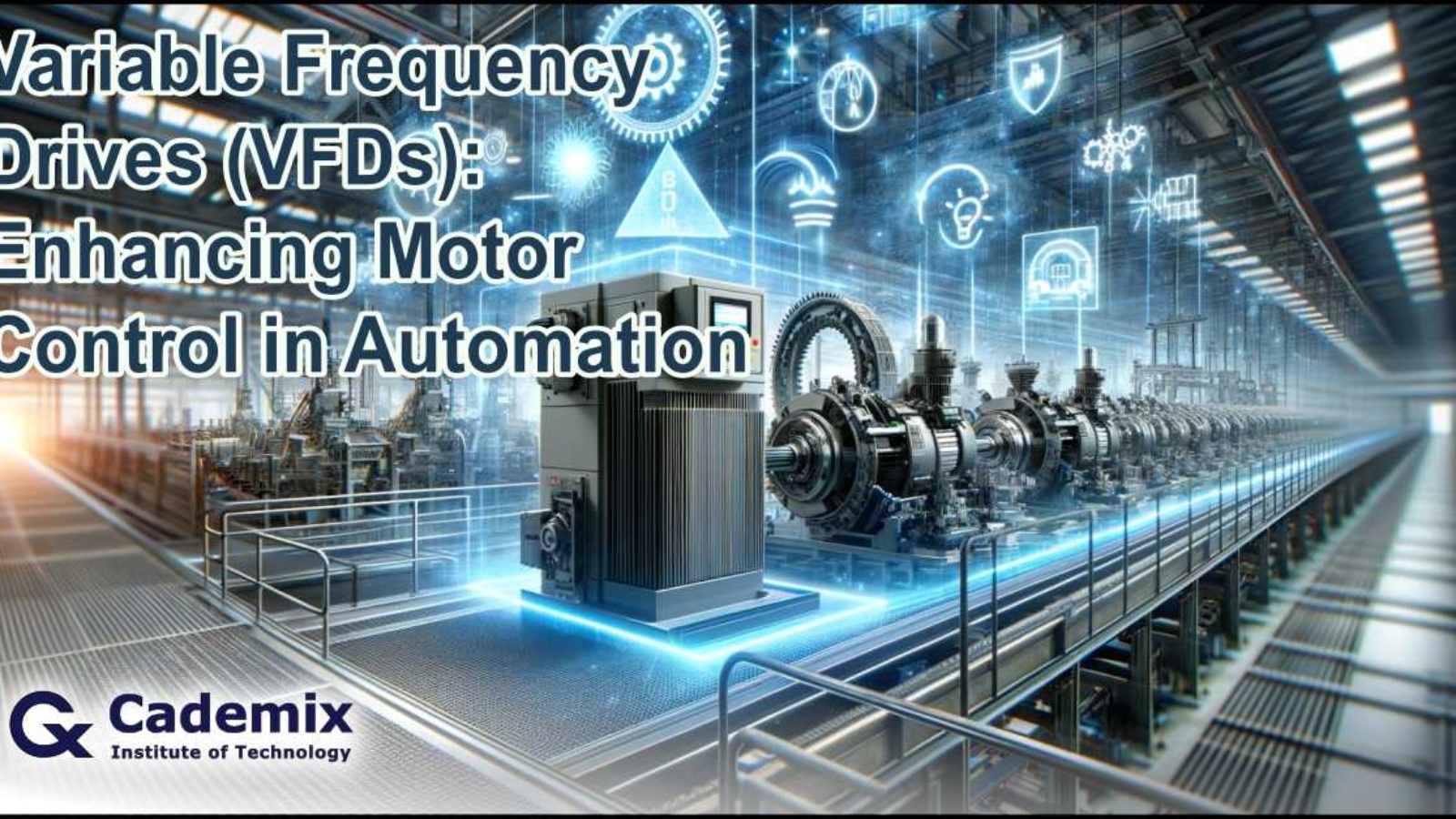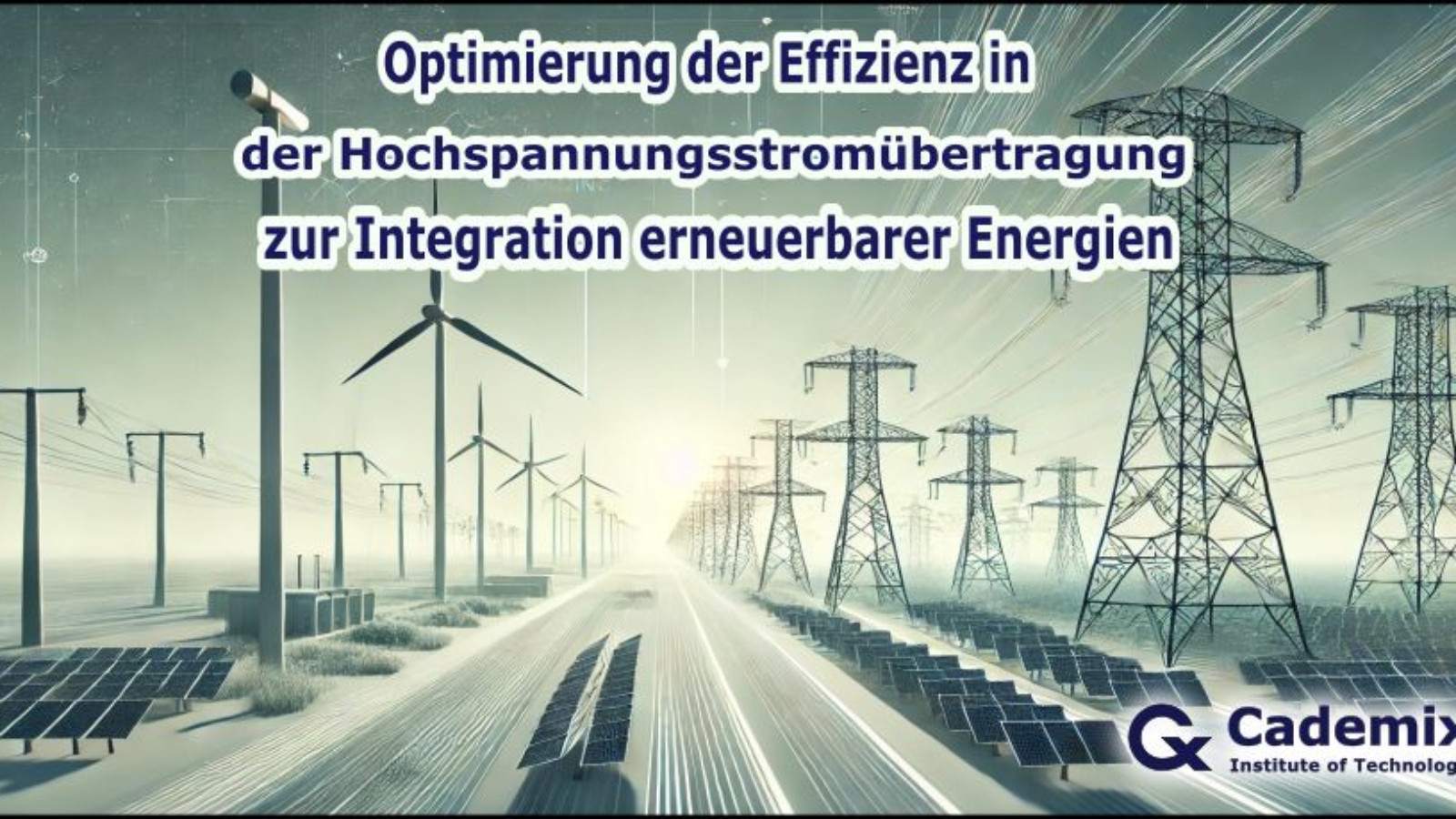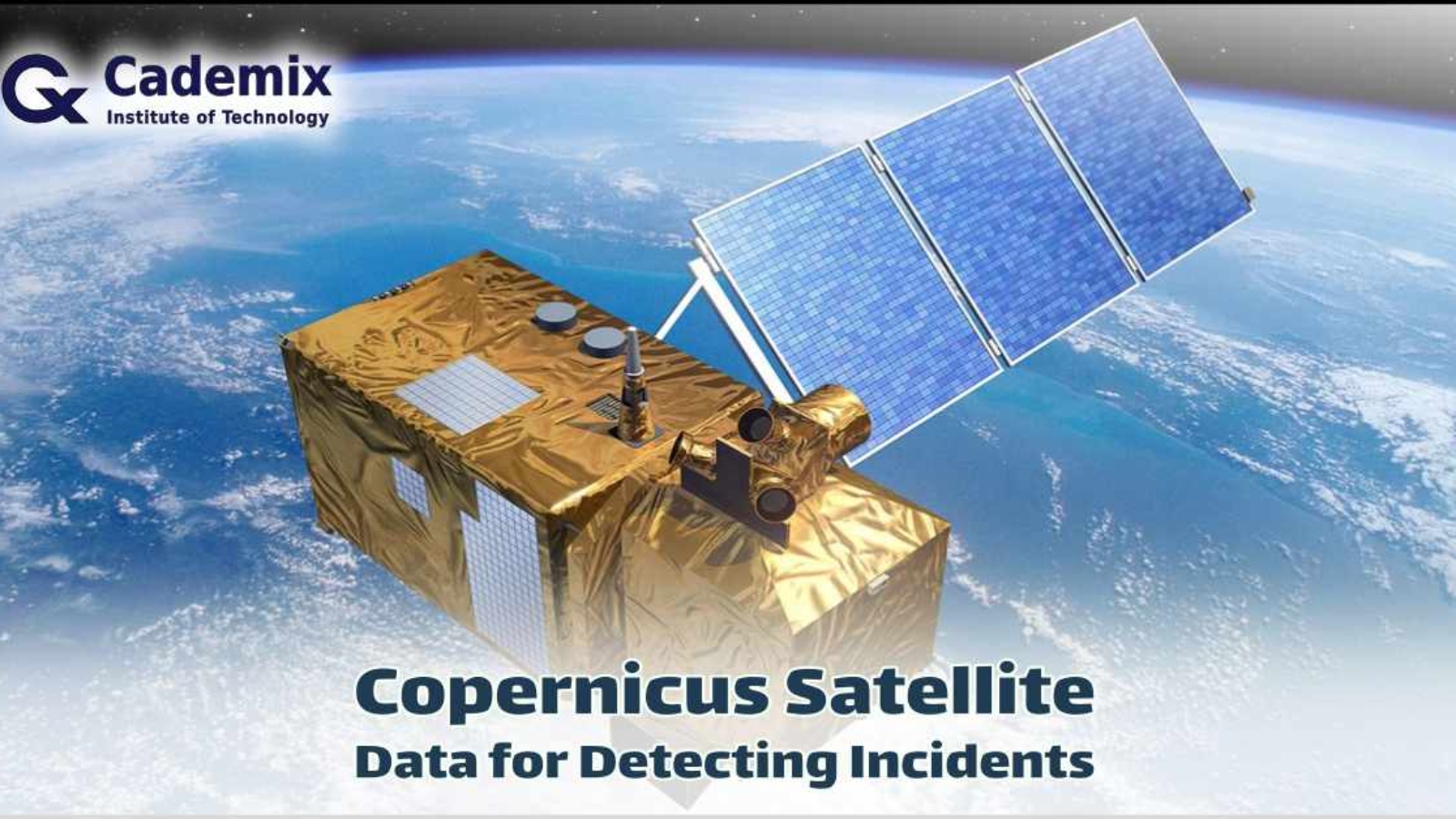Estimated Reading Time: 5 minutes This article details the features of the new ChatGPT desktop app, its benefits for both free and premium users, and how it integrates seamlessly with users’ workflows. It highlights the app’s key functionalities and the advantages it brings to everyday productivity.
Variable Frequency Drives (VFDs): Enhancing Motor Control in Automation
Estimated Reading Time: 13 minutes Exploring the transformative role of Variable Frequency Drives (VFDs) in automation, this article delves into their benefits, applications, and the cutting-edge trends shaping the future of industrial efficiency and sustainability.
GPT-4o for Business: Transforming Workflows and Productivity
Estimated Reading Time: 5 minutes Explore how GPT-4o for business can revolutionize operations, streamline workflows, and enhance productivity with its advanced features. This article delves into the integration of GPT-4o in business, showcasing its potential to transform various aspects of work.
Advanced SEO Techniques: Leveraging Reflective Search Intent for Competitive Edge
Estimated Reading Time: 4 minutes In the ever-evolving world of search engine optimization (SEO), staying ahead of the competition requires innovative and advanced SEO techniques. One such technique is leveraging reflective search intent, where users search for terms typically used by the opposite party. This article explores the concept of reflective search intent and how it can be utilized as an advanced SEO technique to gain a competitive edge. By understanding and implementing this strategy, you can significantly enhance your site’s visibility and attract a highly targeted audience.
Optimierung der Effizienz in der Hochspannungsstromübertragung zur Integration erneuerbarer Energien
Zusammenfassung
Die Integration erneuerbarer Energiequellen in das Stromnetz ist ein zentrales Ziel für nachhaltige Entwicklung und die Reduzierung von CO₂-Emissionen geworden. Hochspannungsstromübertragung (HVPT) spielt eine entscheidende Rolle beim effizienten Transport von Strom von erneuerbaren Energieerzeugungsanlagen, die oft in abgelegenen Gebieten liegen, zu Verbrauchszentren. Dieser Artikel untersucht Strategien und Technologien zur Optimierung der Effizienz von HVPT-Systemen, um eine zuverlässige und kosteneffiziente Lieferung erneuerbarer Energien zu gewährleisten. Durch die Analyse der aktuellen Herausforderungen und Fortschritte in den Bereichen Materialien, Technologien und Netzmanagement bietet dieser Artikel einen umfassenden Überblick über die Optimierung von HVPT für die Integration erneuerbarer Energien.
By: Alireza Alidadi, Cademix Institute of Technology Austria
Table of Contents
1. Einführung
Die globale Energielandschaft befindet sich in einem bedeutenden Wandel, da Länder bestrebt sind, Treibhausgasemissionen zu reduzieren und auf sauberere Energiequellen umzustellen. Erneuerbare Energien, insbesondere Wind-, Solar– und Wasserkraft, sind zu einem wesentlichen Bestandteil dieses Wandels geworden. Diese Energiequellen bieten eine nachhaltige Alternative zu fossilen Brennstoffen, die für einen Großteil der globalen CO₂-Emissionen verantwortlich sind. Allerdings ist die Erzeugung erneuerbarer Energien oft geografisch begrenzt, da die besten Standorte für Wind- und Solarenergieerzeugung normalerweise weit von städtischen Zentren entfernt sind, in denen die Energienachfrage am höchsten ist.
Hochspannungsstromübertragung ist unerlässlich, um die Lücke zwischen erneuerbaren Energieerzeugungsanlagen und Verbrauchsgebieten zu überbrücken. Durch die Erhöhung der Spannung können Stromübertragungssysteme die Energieverluste, die über große Entfernungen auftreten, reduzieren und den Stromtransport effizienter gestalten. Dies ist besonders wichtig für erneuerbare Energien, bei denen die Aufrechterhaltung der Effizienz entscheidend für die wirtschaftliche Rentabilität der Projekte ist. Ohne eine effiziente Übertragung können die Vorteile erneuerbarer Energien durch die Kosten und Verluste, die mit dem Langstreckenstromtransport verbunden sind, erheblich verringert werden.
In diesem Kontext wird die Optimierung der Hochspannungsstromübertragung zu einer Schlüsselpriorität. Die Integration erneuerbarer Energien in das bestehende Stromnetz stellt einzigartige Herausforderungen dar, die innovative Lösungen erfordern. Dieser Artikel wird die Bedeutung von HVPT, die Herausforderungen der Integration erneuerbarer Energien und die Strategien zur Effizienzsteigerung untersuchen. Durch das Verständnis dieser Elemente können Interessengruppen besser Systeme entwerfen und implementieren, die die weit verbreitete Nutzung erneuerbarer Energien unterstützen.
2. Bedeutung der Hochspannungsstromübertragung
Hochspannungsstromübertragungssysteme sind darauf ausgelegt, große Mengen an Strom über große Entfernungen mit minimalen Energieverlusten zu transportieren. Das Konzept der Verwendung hoher Spannungen für die Stromübertragung basiert auf dem Prinzip, dass eine Erhöhung der Spannung den für die Lieferung derselben Energiemenge erforderlichen Strom reduziert. Diese Stromreduktion führt zu niedrigeren ohmschen Verlusten (I²R-Verluste), die proportional zum Quadrat des Stroms sind. Daher können Stromübertragungssysteme durch die Übertragung von Elektrizität mit höheren Spannungen die Energieverluste erheblich reduzieren und die Gesamtenergieeffizienz verbessern.
Neben der Reduzierung von Verlusten verbessern Hochspannungssysteme die Stabilität von Stromnetzen. Stabilität ist ein entscheidender Faktor, um eine zuverlässige Stromversorgung aufrechtzuerhalten, insbesondere da die Nachfrage nach Strom im Laufe des Tages schwankt. Hochspannungssysteme helfen, die Spannungspegel im Netz aufrechtzuerhalten und das Risiko von Spannungseinbrüchen und Stromausfällen zu verringern. Dies ist besonders wichtig für die Integration erneuerbarer Energien, die aufgrund ihrer intermittierenden Natur Variabilität in die Stromversorgung einbringen können.
Darüber hinaus ermöglicht die Hochspannungsübertragung eine erhöhte Kapazität, sodass große Mengen an Strom von erneuerbaren Energieerzeugungsanlagen zu Gebieten mit hoher Nachfrage transportiert werden können. Da sich die Projekte zur Erzeugung erneuerbarer Energien vergrößern, um den globalen Energiebedarf zu decken, wird die Fähigkeit, mehr Strom effizient zu übertragen, immer wichtiger. Hochspannungssysteme bieten die Kapazität, die erforderlich ist, um den zunehmenden Zustrom erneuerbarer Energien zu bewältigen, und gewährleisten eine zuverlässige und kosteneffiziente Lieferung an die Verbraucher.
3. Herausforderungen bei der Integration erneuerbarer Energien
Trotz der Vorteile der Hochspannungsübertragung stellt die Integration erneuerbarer Energien in das Stromnetz mehrere Herausforderungen dar. Eine der Hauptprobleme ist die Intermittenz erneuerbarer Energiequellen. Im Gegensatz zu herkömmlichen fossilen Kraftwerken, die eine konstante Leistung liefern können, sind erneuerbare Energiequellen wie Wind- und Solarenergie von Wetterbedingungen abhängig. Windkraft, zum Beispiel, variiert mit der Windgeschwindigkeit, während Solarenergie von der Verfügbarkeit von Sonnenlicht abhängt. Diese Intermittenz kann zu Schwankungen in der Energieerzeugung führen, was es schwierig macht, Angebot und Nachfrage auszugleichen.
Diese Schwankungen können erhebliche Herausforderungen für die Netzstabilität darstellen. Das Stromnetz erfordert ein ständiges Gleichgewicht zwischen der erzeugten und der verbrauchten Energie. Jegliche Ungleichgewichte können zu Spannungsschwankungen und Frequenzabweichungen führen, die Geräte beschädigen und zu Stromausfällen führen können. Die Integration großer Mengen intermittierender erneuerbarer Energien in das Netz erfordert fortschrittliche Netzmanagement- und Kontrollsysteme, um die Stabilität zu gewährleisten. Ohne diese Systeme kann die Zuverlässigkeit der Stromversorgung beeinträchtigt werden, was zu potenziellen Störungen führen könnte.
Ein weiteres Problem sind die inhärenten Übertragungsverluste, die mit dem Transport von Strom über große Entfernungen verbunden sind. Selbst bei Hochspannungsübertragung geht ein Teil der Energie als Wärme aufgrund des Widerstands der Übertragungsleitungen verloren. Je größer die Entfernung, desto höher die Verluste. Da erneuerbare Energieprojekte oft weit von den Verbrauchszentren entfernt sind, ist es entscheidend, diese Verluste zu minimieren, um die Effizienz und die wirtschaftliche Rentabilität erneuerbarer Energien zu maximieren. Fortschrittliche Technologien und Materialien sind erforderlich, um Übertragungsverluste zu reduzieren und die Gesamtenergieeffizienz des Stromübertragungssystems zu verbessern.
4. Strategien zur Optimierung der Effizienz
Um die Herausforderungen der Integration erneuerbarer Energien zu bewältigen und die Effizienz der Hochspannungsstromübertragung zu optimieren, können mehrere Strategien angewendet werden. Diese Strategien umfassen Fortschritte in den Bereichen Materialien, Übertragungstechnologien und Netzmanagementpraktiken. Durch die Implementierung dieser Strategien können Stromübertragungssysteme effizienter, zuverlässiger und in der Lage werden, die weit verbreitete Nutzung erneuerbarer Energien zu unterstützen.
4.1 Fortschrittliche Leitermaterialien
Eine der effektivsten Methoden zur Reduzierung von Übertragungsverlusten besteht darin, fortschrittliche Leitermaterialien zu verwenden, die einen geringeren Widerstand bieten. Traditionelle Übertragungsleitungen bestehen aus Aluminium oder Kupfer, die eine gute elektrische Leitfähigkeit aufweisen, aber auch erhebliche ohmsche Verluste über lange Entfernungen verursachen. Hochtemperatursupraleiter (HTS) sind eine vielversprechende Alternative. Diese Materialien können große Mengen an Strom mit minimalem Widerstand leiten, wenn sie auf sehr niedrige Temperaturen abgekühlt werden. Obwohl die Technologie noch in der Entwicklung ist, haben HTS-Materialien das Potenzial, ohmsche Verluste in Stromübertragungsleitungen erheblich zu reduzieren.
Ein weiterer Ansatz ist die Verwendung von Verbundleitern, die traditionelle Materialien mit fortschrittlichen Verbundstoffen kombinieren, um die Leistung zu verbessern. Beispielsweise verwenden Aluminiumleiter-Verbundkernkabel (ACCC) einen Kohlefaser-Kern, um die Durchhängung zu reduzieren und die Festigkeit zu erhöhen, wodurch höhere Übertragungskapazitäten und reduzierte Verluste möglich werden. Diese Kabel können bei höheren Temperaturen als herkömmliche Aluminium- oder Kupferleiter betrieben werden, was die ohmschen Verluste weiter reduziert und die Effizienz verbessert.
Die Entwicklung neuer Materialien konzentriert sich auch auf die Verbesserung der Haltbarkeit und Zuverlässigkeit von Übertragungsleitungen. Leiter, die extremen Umweltbedingungen, wie hohen Temperaturen und korrosiven Umgebungen, standhalten können, sind unerlässlich, um eine effiziente Stromübertragung aufrechtzuerhalten. Durch die Verwendung von Materialien, die widerstandsfähig gegen Abnutzung sind, können Stromübertragungssysteme die Wartungskosten senken und die langfristige Zuverlässigkeit verbessern.
4.2 Hochspannungs-Gleichstromtechnik (HVDC)
Die Hochspannungs-Gleichstromtechnik (HVDC) bietet gegenüber herkömmlichen Wechselstromübertragungssystemen (AC) für den Langstreckentransport von Energie erhebliche Vorteile. HVDC-Systeme sind effizienter, da sie geringere Leitungsverluste aufweisen und Strom über größere Entfernungen ohne die Notwendigkeit von Zwischensubstationen übertragen können. Dies macht HVDC besonders geeignet für die Verbindung entlegener erneuerbarer Energiequellen, wie Offshore-Windparks, mit dem Hauptnetz.
Einer der Hauptvorteile von HVDC ist die Fähigkeit, Stromflüsse präziser zu steuern. Im Gegensatz zu AC-Systemen, die auf die natürliche Oszillation des Stroms angewiesen sind, verwenden HVDC-Systeme elektronische Umrichter, um die Stromflüsse zu steuern. Dies ermöglicht eine bessere Kontrolle über die Menge und Richtung des übertragenen Stroms, was für die Integration variabler erneuerbarer Energiequellen entscheidend ist. HVDC kann auch Netzdienste wie Frequenzregelung und Spannungsstabilisierung bereitstellen, die zur Aufrechterhaltung der Netzstabilität bei hohen Anteilen erneuerbarer Energien beitragen.
HVDC-Technologie ist auch ideal für Unterwasser- und Erdkabel, bei denen AC-Übertragung aufgrund kapazitiver Effekte erhebliche Verluste erleiden würde. HVDC-Kabel werden verwendet, um Offshore-Windparks mit dem Festlandnetz zu verbinden, wodurch der effiziente Transport großer Energiemengen, die auf See erzeugt werden, ermöglicht wird. Mit der Expansion von Offshore-Windprojekten wird der Einsatz von HVDC immer wichtiger, um die effiziente und zuverlässige Integration von Windenergie in das Stromnetz zu gewährleisten.
4.3 Flexible Wechselstrom-Übertragungssysteme (FACTS)
Flexible Wechselstrom-Übertragungssysteme (FACTS) sind Technologien, die darauf abzielen, die Steuerbarkeit und Stabilität von Wechselstrom-Stromübertragungssystemen zu verbessern. FACTS-Geräte können die Spannung, Impedanz und Phasenwinkel dynamisch regulieren, den Stromfluss optimieren und Verluste reduzieren. Durch die Bereitstellung von Echtzeit-Steuerung der Übertragungsparameter kann FACTS dazu beitragen, die durch erneuerbare Energiequellen eingeführte Variabilität zu bewältigen und eine stabile und effiziente Stromversorgung zu gewährleisten.
Ein häufig eingesetztes FACTS-Gerät ist der statische Var-Kompensator (SVC), der dynamische Blindleistung zur Aufrechterhaltung der Spannungspegel im Netz bereitstellt. SVCs können schnell auf Änderungen in der Stromnachfrage oder -erzeugung reagieren, Spannungseinbrüche verhindern und die Netzstabilität verbessern. Eine weitere wichtige FACTS-Technologie ist der Unified Power Flow Controller (UPFC), der sowohl die Spannung als auch den Stromfluss in einer Übertragungsleitung steuern kann und so größere Flexibilität und eine Verringerung der Netzengpässe ermöglicht.
Der Einsatz von FACTS-Technologien kann auch dazu beitragen, teure Infrastrukturerweiterungen zu vermeiden. Durch die Optimierung der Nutzung bestehender Übertragungsleitungen kann FACTS die Kapazität und Effizienz des Stromnetzes erhöhen, ohne dass neue Übertragungsleitungen erforderlich sind. Dies ist besonders wertvoll in dicht besiedelten Gebieten, in denen der Bau neuer Übertragungsleitungen aufgrund von Landnutzungs- und Umweltauflagen schwierig sein kann.
4.4 Modernisierung des Netzes und intelligente Netze
Die Modernisierung des Netzes ist unerlässlich für die Integration erneuerbarer Energien und die Optimierung der Hochspannungsstromübertragung. Ein modernes Netz integriert fortschrittliche Technologien wie Sensoren, Kommunikationssysteme und automatisierte Steuerungen zur Echtzeitüberwachung und Verwaltung von Stromflüssen. Diese Technologien bilden die Grundlage für intelligente Netze, die eine verbesserte Effizienz, Zuverlässigkeit und Flexibilität bei der Stromverteilung bieten.
Intelligente Netze ermöglichen eine bessere Integration erneuerbarer Energien, indem sie Echtzeitdaten zur Stromerzeugung und -verbrauch bereitstellen. Diese Informationen ermöglichen es Netzbetreibern, fundierte Entscheidungen darüber zu treffen, wie Angebot und Nachfrage ausgeglichen werden können, wodurch das Risiko von Stromausfällen verringert und die Netzstabilität verbessert wird. Intelligente Netze können auch Demand-Response-Programme unterstützen, bei denen Verbraucher Anreize erhalten, ihren Stromverbrauch während Spitzenzeiten zu reduzieren, was die Effizienz des Stromnetzes weiter verbessert.
Neben der Verbesserung der betrieblichen Effizienz erleichtern intelligente Netze die Integration dezentraler Energiequellen (DERs), wie z. B. Solaranlagen auf Dächern und kleine Windkraftanlagen. Durch die Ermöglichung einer bidirektionalen Kommunikation zwischen Netz und Verbrauchern können DERs nahtlos in das Stromsystem integriert werden, wodurch zusätzliche Erzeugungskapazitäten bereitgestellt und die Abhängigkeit von großen zentralen Kraftwerken verringert wird. Dieser dezentrale Ansatz zur Energieerzeugung und -verteilung ist der Schlüssel zum Aufbau eines widerstandsfähigeren und nachhaltigeren Energiesystems.
4.5 Energiespeicherlösungen
Energiespeicherung ist ein entscheidender Bestandteil der Optimierung der Hochspannungsstromübertragung und der Integration erneuerbarer Energien. Speichersysteme können die Intermittenz erneuerbarer Energiequellen abmildern, indem sie überschüssige Energie speichern, die während Perioden hoher Produktion erzeugt wird, und sie während Perioden niedriger Produktion oder hoher Nachfrage freisetzen. Dies hilft, Angebot und Nachfrage auszugleichen und eine stabile und zuverlässige Stromversorgung zu gewährleisten.
Es stehen verschiedene Energiespeichertechnologien zur Verfügung, die jeweils ihre eigenen Vorteile und Anwendungen haben. Batterien, wie Lithium-Ionen- und Flussbatterien, werden aufgrund ihrer hohen Effizienz und schnellen Reaktionszeiten häufig eingesetzt. Sie eignen sich zur Bereitstellung von kurzfristigen Energiespeichern und Netzdienstleistungen wie Frequenzregelung und Spannungsregelung. Pumpspeicherkraftwerke, die die Gravitationsenergie von Wasser zur Energiespeicherung nutzen, sind die am weitesten verbreitete Form der großtechnischen Energiespeicherung. Sie bieten eine hohe Kapazität und lange Entladezeiten, was sie ideal für die Bewältigung täglicher und saisonaler Schwankungen in der Erzeugung erneuerbarer Energien macht.
Schwungräder und Druckluftspeicher (CAES) sind weitere aufkommende Technologien, die einzigartige Vorteile für die Integration erneuerbarer Energien bieten. Schwungräder speichern Energie in Form von rotierender kinetischer Energie und bieten schnelle Reaktionszeiten für die Netzstabilisierung. CAES speichert Energie, indem Luft in unterirdischen Kavernen komprimiert wird, die bei Bedarf freigesetzt werden kann, um Strom zu erzeugen. Diese Technologien bieten zusätzliche Optionen zur Verbesserung der Flexibilität und Zuverlässigkeit des Stromnetzes.
5. Fallstudien
5.1 Die europäische Supergrid-Initiative
Die europäische Supergrid-Initiative zielt darauf ab, ein kontinentweites Netz von Hochspannungsübertragungsleitungen zu schaffen, um verschiedene nationale Netze zu verbinden und die Integration erneuerbarer Energien zu erleichtern. Das Supergrid ermöglicht den Transport von Elektrizität aus erneuerbaren Regionen, wie der Nordsee, wo große Offshore-Windparks angesiedelt sind, zu Gebieten mit hoher Nachfrage in Mittel- und Südeuropa. Dieses vernetzte Netzwerk wird die Energiesicherheit verbessern, CO₂-Emissionen reduzieren und die Klimaziele der EU unterstützen.
Das Supergrid wird stark auf HVDC-Technologie angewiesen sein, die sich gut für den Langstreckenstromtransport und Unterwasserkabel eignet. Durch den Einsatz von HVDC kann das Supergrid große Energiemengen effizient und mit minimalen Verlusten transportieren, sodass erneuerbare Energiequellen, die weit von den Verbrauchszentren entfernt sind, angeschlossen werden können. Die Fähigkeit, Stromflüsse präzise zu steuern, wird auch dazu beitragen, die Variabilität erneuerbarer Energien zu bewältigen und eine stabile und zuverlässige Stromversorgung sicherzustellen.
Die Entwicklung des europäischen Supergrid stellt mehrere Herausforderungen dar, darunter die Notwendigkeit erheblicher Investitionen, regulatorischer Harmonisierung und technologischer Innovation. Die potenziellen Vorteile sind jedoch erheblich. Das Supergrid wird eine größere Integration erneuerbarer Energien ermöglichen, die Abhängigkeit von fossilen Brennstoffen verringern und die Widerstandsfähigkeit des europäischen Stromsystems erhöhen. Durch die Schaffung eines stärker vernetzten und flexiblen Netzes kann Europa eine führende Rolle im Übergang zu einer nachhaltigen Energiezukunft übernehmen.
5.2 Chinas Ultra-Hochspannungs-Übertragungsnetz (UHV)
China hat stark in den Aufbau eines umfangreichen Ultra-Hochspannungs-Übertragungsnetzes (UHV) investiert, um seine abgelegenen erneuerbaren Energiequellen, wie Wind- und Solarenergie im Nordwesten, mit den städtischen Zentren im Osten und Süden zu verbinden. Das UHV-Netz arbeitet mit Spannungen von 800 kV und höher, was die Übertragungsverluste erheblich reduziert und den Transport großer Energiemengen über große Entfernungen ermöglicht.
Das UHV-Netz ist ein wesentlicher Bestandteil der chinesischen Strategie, zu einer kohlenstoffarmen Wirtschaft überzugehen und die Luftverschmutzung zu verringern. Durch die Anbindung erneuerbarer Energieprojekte an das Hauptnetz unterstützt das UHV-Netz den großflächigen Einsatz von Wind- und Solarenergie, hilft bei der Diversifizierung des Energiemixes Chinas und reduziert die Abhängigkeit von Kohle. Das Netz verbessert auch die Netzstabilität, indem es ein robustes und flexibles Übertragungssystem bereitstellt, das die Variabilität erneuerbarer Energien bewältigen kann.
Chinas Erfahrungen mit UHV-Übertragung bieten wertvolle Lehren für andere Länder, die erneuerbare Energien in ihre Stromsysteme integrieren möchten. Die erfolgreiche Implementierung von UHV-Technologie zeigt die Bedeutung von Investitionen in fortschrittliche Übertragungsinfrastruktur zur Unterstützung des Wachstums erneuerbarer Energien. Da mehr Länder ehrgeizige Ziele für erneuerbare Energien setzen, wird die Entwicklung effizienter und zuverlässiger Hochspannungsübertragungsnetze entscheidend sein, um diese Ziele zu erreichen.
6. Schlussfolgerung
Die Optimierung der Effizienz der Hochspannungsstromübertragung ist entscheidend für die erfolgreiche Integration erneuerbarer Energien in das Stromnetz. Durch den Einsatz fortschrittlicher Materialien, HVDC-Technologie, FACTS, intelligenter Netze und Energiespeicherlösungen können wir die Herausforderungen der Integration erneuerbarer Energien bewältigen. Diese Strategien verbessern nicht nur die Zuverlässigkeit und Stabilität des Stromnetzes, sondern tragen auch zu einer nachhaltigen und kohlenstoffarmen Energiezukunft bei.
Der globale Übergang zu erneuerbaren Energien stellt sowohl Herausforderungen als auch Chancen dar. Effiziente Hochspannungsstromübertragungssysteme sind unerlässlich, um erneuerbare Energieerzeugungsanlagen mit Verbrauchszentren zu verbinden und sicherzustellen, dass die Vorteile erneuerbarer Energien vollständig genutzt werden. Durch Investitionen in innovative Technologien und Netzmanagementpraktiken können wir ein widerstandsfähigeres und nachhaltigeres Energiesystem aufbauen, das Wirtschaftswachstum und Umweltschutz unterstützt.
Da die Nachfrage nach sauberer Energie weiter wächst, wird die Optimierung der Hochspannungsstromübertragung immer wichtiger. Regierungen, Industrie und Forschungseinrichtungen müssen zusammenarbeiten, um die Technologien und Strategien zu entwickeln und einzusetzen, die erforderlich sind, um die Effizienz von Stromübertragungssystemen zu verbessern. Indem wir dies tun, können wir den Weg zu einer nachhaltigen Energiezukunft ebnen, die den Bedürfnissen heutiger und zukünftiger Generationen gerecht wird.
7. Zukünftige Perspektiven
Blickt man in die Zukunft, wird die Entwicklung und Einführung innovativer Hochspannungsübertragungstechnologien entscheidend sein, um das weitere Wachstum erneuerbarer Energien zu unterstützen. Fortschritte in der Materialwissenschaft, Leistungselektronik und Netzmanagement werden eine effizientere und zuverlässigere Stromübertragung ermöglichen, wodurch die Kosten und die Umweltbelastung der Energieerzeugung und -verteilung reduziert werden.
Forschung und Entwicklungsanstrengungen sollten sich darauf konzentrieren, die Leistung und Kosteneffizienz fortschrittlicher Leitermaterialien, HVDC-Technologie und Energiespeicherlösungen zu verbessern. Investitionen in intelligente Netzinfrastrukturen werden ebenfalls entscheidend sein, um die Flexibilität und Widerstandsfähigkeit des Stromnetzes zu erhöhen. Durch einen proaktiven Ansatz bei der Modernisierung des Netzes können wir ein Stromsystem schaffen, das den Herausforderungen des 21. Jahrhunderts gewachsen ist.
Die Zusammenarbeit zwischen Interessengruppen, einschließlich Regierungen, Industrie, Wissenschaft und Verbrauchern, wird unerlässlich sein, um diese Ziele zu erreichen. Durch die Zusammenarbeit können wir die Richtlinien, Standards und Technologien entwickeln, die erforderlich sind, um die Hochspannungsstromübertragung zu optimieren und den Übergang zu einer nachhaltigen Energiezukunft zu beschleunigen. Die Integration erneuerbarer Energien ist nicht nur eine technische Herausforderung; sie ist eine gesellschaftliche Verpflichtung, die einen gemeinsamen Einsatz erfordert, um eine saubere, zuverlässige und erschwingliche Energieversorgung für alle sicherzustellen.
Referenzen
- Anderson, P. M., & Fouad, A. A. (2003). Power System Control and Stability. IEEE Press.
- Kundur, P. (1994). Power System Stability and Control. McGraw-Hill Education.
- Siemens Energy. (2021). High Voltage Direct Current (HVDC) Transmission Systems Technology Review Paper.
- International Renewable Energy Agency (IRENA). (2020). Renewable Power Generation Costs in 2019.
- Europäische Kommission. (2021). The European Supergrid: A Vision for 2030.
- State Grid Corporation of China. (2019). Ultra-High Voltage Transmission: A Key Technology for China’s Energy Transition.
Career Opportunities in UX Design: Skills and Roles Shaping the Future
Estimated Reading Time: 11 minutes Explore the transformative impact of AI and emerging technologies on UX design in 2024, highlighting innovations in prototyping tools, collaborati
How to Use Copernicus Satellite Data to Detect Incidents: 10 Step Tutorial
Estimated Reading Time: 7 minutes Satellite imagery can provide valuable information in various situations, including detecting incidents like helicopter crashes. This tutorial will guide you through using Copernicus satellite data to analyze and detect such events. While some steps can be done manually, others, like large-scale image comparison, require systematic and automated methods using programming.
Introduction to GPT-4o: The New Frontier in AI Technology
Estimated Reading Time: 6 minutes This article introduces GPT-4o, shedding light on its advancements over previous models, its diverse applications, and its benefits for both free and premium users. It emphasizes the evolution in AI technology and the potential it holds for various sectors.
Comprehensive Guide to Curriculum Vitae Format Word: How to Create, Customize, and Use Professional CVs for Job Applications
Estimated Reading Time: 6 minutes Creating an impressive curriculum vitae format word (CV) is crucial in the job search process. This comprehensive guide will help you understand how to create, customize, and use various CV formats available in Microsoft Word to create a professional and compelling document for job applications.
Improving Communication Skills with GPT-4o: Applications for Real-Time Personal and Professional Growth
Estimated Reading Time: 6 minutes This article explores how GPT-4o can be used to improve communication skills in real-time, benefiting both personal and professional growth. It covers various applications of GPT-4o in enhancing verbal, written, and non-verbal communication, offering practical tips and techniques for leveraging this advanced AI tool.










